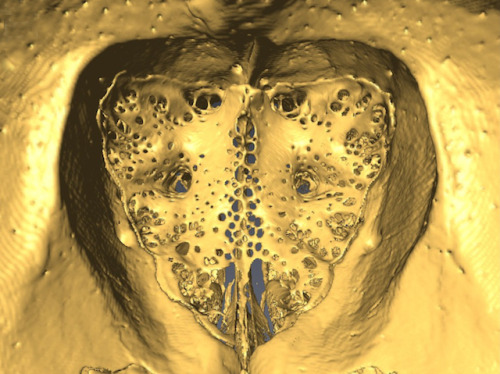
Following Your Nose
Your nose can detect around a trillion smells, in part thanks to its olfactory sensory nerves. These nerves are also involved in clearing out waste that your brain produces, acting as a conduit for the drainage of waste-laden cerebrospinal fluid (CSF). Using mice, researchers dig deeper into the anatomy of CSF removal, focusing on the bone that separates the nasal cavity from the brain, the cribriform plate (pictured, captured using micro-CT imaging). They injected a dye into the brain to track the drainage of CSF via olfactory sensory nerves passing through holes in the cribriform plate. Chemically destroying these nerves significantly reduced CSF drainage via the cribriform plate without increasing pressure inside the skull. This suggests a compensatory change in CSF production or flow. Damage to these nerves in humans, such as by air pollution, could therefore disrupt CSF turnover, which is known to occur in certain brain diseases.
Written by Lux Fatimathas
- Image from work by Jordan N. Norwood and colleagues
- Pennsylvania State University, PA, USA
- Image originally published under a Creative Commons Licence (BY 4.0)
- Published in eLife, May 2019
You can also follow BPoD on Instagram, Twitter and Facebook
Archive link



Комментариев нет:
Отправить комментарий